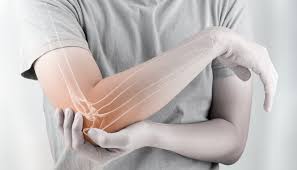Cancer of endometrium, Neoplasm of endometrium, Endometrial neoplasm.
Root Cause of Disease
DNA mutation
Uterine cancer forms when the DNA in cells in the uterus mutate, disabling functions that control cell division and growth. In most cases, cancer cells in the uterus are found in the endometrium, the inner lining of the uterus. This is called endometrial cancer. While the exact cause of a woman’s uterine cancer may not be known, certain risk factors are strongly linked to the disease, including obesity and high blood sugar.
Uterine sarcoma and endometrial cancer have different risk factors. Having one risk factor for cancers of the uterus, or even several, doesn’t mean you will get the disease. Likewise, having no common risk factors doesn’t mean you will not develop cancer.
Symptoms
Unusual vaginal bleeding is the most common symptom of uterine cancer, particularly any bleeding after menopause. Other common symptoms may include:
- Heavier than usual periods or a change in your periods
- Vaginal bleeding between periods
- Periods that continue without a break.
Less common symptoms include:
- A watery discharge, which may have an unpleasant smell.
- Unexplained weight loss
- Difficulty urinating or a change in bowel habit
- Abdominal pain.
Causes
Uterine cancer forms when the DNA in cells in the uterus mutate, disabling functions that control cell division and growth. In most cases, cancer cells in the uterus are found in the endometrium, the inner lining of the uterus. This is called endometrial cancer.
While the exact cause of a woman’s uterine cancer may not be known, certain risk factors are strongly linked to the disease, including obesity and high blood sugar.
Uterine sarcoma and endometrial cancer have different risk factors. Having one risk factor for cancers of the uterus, or even several, doesn’t mean you will get the disease. Likewise, having no common risk factors doesn’t mean you will not develop cancer.
- Being postmenopausal, or reaching menopause (after age 55)
- A thickened wall lining (endometrial hyperplasia)
- Never having children
- Starting periods early (before age 12)
- Having high blood pressure or diabetes
- Being overweight or obese
- Family history of ovarian, uterine, or bowel cancer
- Having a genetic condition such as Cowden syndrome or Lynch syndrome
- Previous ovarian tumors, or polycystic ovary syndrome
- Using Estrogen only hormone replacement therapy or fertility treatment
Home Remedies to treat Uterine Cancer
Remedy-1: Garlic
Materials : Garlic, Honey, Water, Lemon

Garlic (Allium sativum) is an herb related to onion, leeks, and chives. It is commonly used for conditions related to the heart and blood system. Garlic produces a chemical called allicin. This is what seems to make garlic work for certain conditions. Allicin also makes garlic smell.
Procedure:
- Skin two pods of garlic and boil it well in water.
- Turn off the heat once it has boiled for three-four minutes.
- Add half a cup of honey and half a cup of lemon juice to enhance the taste and also improve the nutritional value of the drink. You can consume this drink warm.
Product Link: Garlic
Remedy – 2: Ashwagandha
Materials : Ashwagandha powder, Water, Lemon, Honey

Ashwagandha herb is not only used in Ayurveda, but has also been adopted by homeopathy as conventional medicine to make extracts. Ashwagandha is an adaptogen, which means it can adapt to the requirements of the body and then make the changes to provide support to the necessary areas. It is also very good at preventing the growth of cancer cells.
Procedure:
- Boil water in a saucepan.
- Add the ashwagandha powder to it, or you can use a couple of ashwagandha roots.
- Close the lid and let it boil for 10-15 minutes.
- Strain in it a cup and squeeze some lemon juice and add honey as per your taste.
Product link: Ashwagandha
Remedy – 3: Green tea
Materials : Green Tea bag, Water, Honey.

Green tea intake has likewise been shown to protect against various liver conditions, including liver cancer, hepatitis, cirrhosis, fatty liver (hepatic steatosis), and chronic liver disease. While drinking green tea is considered safe for most people, in rare cases, green tea extract supplements have been linked to acute liver injury.
Procedure:
- The most important tip for steeping green tea is to use water that is just below the boiling point.
- Steep for under three minutes.
- This will draw out the maximum benefit from the tea and the least amount of caffeine.
Product Link: Green Tea
Preventions
Different factors contribute to different types of cancer. Researchers continue to investigate what factors cause uterine cancer, including ways to prevent it. Although there is no proven way to completely prevent uterine cancer, you may be able to lower your risk.
Research has shown that certain factors can lower the risk of uterine cancer:
- Taking birth control pills. Birth control pills have a combination of estrogen and progesterone that are taken cyclically to produce a monthly menstrual period. This reduces the risk of an overgrowth of the uterine lining, especially when taken over a long period of time.
- Using a progestin-secreting intrauterine device (IUD), which is a form of birth control.
- Considering the risk of uterine cancer before starting HRT, especially estrogen replacement therapy alone, which is associated with an increased risk. Using a combination of estrogen and progesterone for HRT may help lower risk. However, combined HRT is associated with breast cancer risk.
- Maintaining a healthy weight, ideally a body mass index (BMI) less than 25.
- If you have diabetes, careful disease management, such as regularly monitoring blood glucose levels, can help lower your risk.




